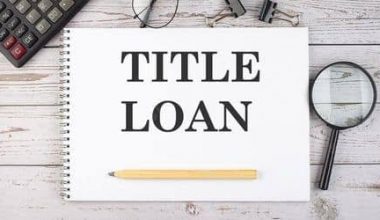You may apply for a mortgage online with many mortgage providers, and the process can be done in 45 minutes or less if you have all of your information ready ahead of time. On the Uniform Residential Loan Application or a comparable standardized form, your lender will request financial and personal information. Here in this guide, we will cover everything you need to know about a mortgage application, the process required, what is included, and necessary requirements.
What Is a Mortgage Application?
One of the first steps in acquiring finance for a real estate acquisition is to fill out a mortgage application. It is a detailed document that includes the mortgage applicant’s personal information, income information, employment history, credit information, and information about the applicant’s assets and obligations. It is frequently done before a potential buyer begins looking for a home to buy. When this is completed, the buyer seeks mortgage pre-approval.
Because the information needed can be somewhat comprehensive, it is preferable to be as precise and thorough as possible. The information given in the application will be used to determine whether or not a mortgage will be granted. Typically, additional paperwork is necessary to corroborate this information.
Methods of Completing a Mortgage Application
Here are the several methods for submitting a mortgage application:
#1. Online Mortgage Application
The secure online mortgage application form is the most effective way to submit a mortgage application. Once you’ve filed your application online, the mortgage brokers will contact you through phone or email, whichever you prefer.
#2. Office Mortgage Meeting
If you prefer to interact with individuals in person, that is totally OK. You can engage in office mortgage meeting.
#3. Telephone Mortgage Application
Applications can be accepted over the phone with the assistance of a Licensed Mortgage Broker if you are not entirely computer savvy and do not have access to an in-person consultation. Although some data will be sent through email or fax, the majority of the mortgage application process can be completed over the phone.
What is Included in a Mortgage Application?
Borrowers will be asked for details about their financial condition, such as income and assets, as well as personal information like as their Social Security number, on the application. You will also be needed to submit documents to back up your statements. The following sections are included in the Uniform Residential Loan Application:
#1. Section I: Type of mortgage and terms of loan
The first portion of the mortgage application asks you to specify whether you want a conventional or FHA loan. You’ll then need to specify the amount borrowed, the interest rate, the loan duration, and the kind of amortization (fixed, adjustable, etc.). A loan officer can assist you in determining which loan is best for you and in determining the loan’s terms and conditions.
#2. Section II: Property information and purpose of loan
In this area, you’ll be asked for the property address, whether the loan is for a buy, refinance, or construction, whether it’s a primary house, second home, or investment property, who will own the property, and how it will be named.
#3. Section III: Borrower information
This section requests specific information on the borrower and co-borrower, such as your Social Security number, current address, school years finished, and marital status. You will also be required to provide a history of your residence.
#4. Section IV: Employment information
Both borrowers must submit their employer’s contact information, how long they’ve been on the job and in the profession, their position or title, and the type of business. If you’ve been at your present employment for less than two years, you must submit past job details.
#5. Section V: Monthly income and combined housing expense information
This section examines your earnings and expenses to see if you can pay the mortgage. You must enter your monthly income, which includes your base salary, bonuses, overtime, commissions, dividends, and interest, rental income, and any other revenue.
You’ll also need to enter your existing and projected monthly housing costs, such as rent or your first mortgage, HOA fees, or mortgage insurance. Self-employed borrowers may be required to supply additional information.
#6. Section VI: Assets and liabilities
In this part, you’ll identify your assets, such as savings, checking, and retirement accounts, as well as any real estate you own. All debts, such as vehicle loans, credit cards, other mortgages, and any alimony or child support you owe, will be included as liabilities.
#7. Section VII: Details of transaction
This section, as the name implies, includes transaction details such as the purchase price or refinance amount, the cost of any home improvements or repairs, the land price (if purchased separately), estimated prepaid items and closing costs, mortgage insurance premiums (if applicable), and any discount points the borrower is paying.
#8. Section VIII: Declarations
The borrower(s) must respond yes or no to questions concerning their previous financial condition in this part, which includes:
- Are there any outstanding judgments against you?
- Have you declared bankruptcy or had a property foreclosed in the last seven years?
- Are you party to a lawsuit?
If you answer yes to any of the questions, you must add an explanation at the end of the application.
#9. Section IX: Acknowledgement and agreement
This section of the signature is legally binding. In it, the applicants confirm that the information provided in the mortgage loan application is truthful and correct, and they agree that the lender may verify the information.
#10. Section X: Information for government monitoring purposes
The mortgage application concludes with optional demographic information to be submitted to government entities. If you choose to participate, you will be asked to provide information about your race, gender, and ethnicity so that the government may verify the lender’s adherence to fair housing rules.
Mortgage Application Requirements
A typical mortgage application requires the following information:
#1. Borrower’s Information
- Borrower’s address, marital status, and dependents
- The type of credit being applied for, meaning whether it’s a joint or individual application
- Social Security number and date of birth
- Current employer and address, as well as employment income
Bank statements and pay stubs, for example, are frequently submitted with the application. If you are self-employed, you may be required to show two years of tax returns as proof of income.
#2. Financial Information
This area requests your assets, or whatever you own with monetary value, as well as your debts and liabilities.
- Assets include bank accounts, retirement accounts, certificates of deposit, savings accounts, and brokerage accounts for stocks or bonds
- Liabilities include revolving credit, such as credit cards or store charge cards, and installment loans, such as student, car, and personal loans
- Any real estate owned and it’s estimated value or rental income, if applicable
#3. Mortgage Loan and Property
This part includes all about the house you want to buy and all of its details.
- Location of the property
- The loan amount and loan type, such as a purchase or refinance
- Any rental revenue from the property if you buy it as an investment with the intention of renting it out
#4. Declarations
This part contains a series of questions designed to ascertain your intent regarding how you intend to utilize the property and to reveal any other legal or financial matters not covered by the application.
- Will this be your primary or secondary residence?
- Are you the subject of any judgments, lawsuits, or liens?
- Do you have any previous foreclosures on your record, or are you a guarantor for another loan?
#5. Acknowledge and Agree
This is the area of the application where you sign, effectively declaring that you believe the information you gave is correct and true.
The information you provide on the mortgage application will be verified and analyzed by the bank’s underwriter, who will then determine how much money the bank will lend to you and at what interest rate. When your mortgage application is approved, the bank will send you a loan estimate that includes closing expenses, followed by a commitment letter. You may be required to pay a deposit of your closing fees at this time to cover the cost of an appraisal.
Required Mortgage Applicant Documents
Your lender will demand extensive paperwork to back up the numbers in addition to supplying the relevant information. It’s a good idea to acquire as much of this documentation as possible before submitting your application.
- Tax returns. Your most recent tax returns will provide the lender with a clear understanding of your financial status. If you don’t have them, don’t worry: you’ll almost certainly sign Form 4506-T, which authorizes the lender to obtain copies straight from the IRS.
- Proof of income. This typically contains recent pay stubs, which allow the lender to see your current earnings. If you are self-employed or generate money other than through a regular paycheck, you will be required to present additional evidence, such as 1099s and profit and loss statements.
- Financial statements. Mortgage lenders will also review statements from your bank accounts, investment accounts, insurance policies, and anything else that supports the income you claim to have. Statements for any debts, including credit cards and installment loans, should also be provided.
- Miscellaneous documents. Depending on your position, you may be required to produce additional documentation.
Mortgage Application Tips
When applying for a mortgage, preparation is essential. Aside from having all of your papers in order, there are a few things you can do to help ensure your application’s success:
- Keep track of the source(s) of the down payment. If a family member is assisting you with a down payment, for example, have them sign a gift letter confirming the source of the cash and their intended use.
- Keep your job the same. Maintain your current position. If possible, avoid resigning or establishing new employment while your application is being processed. If your job condition changes, the lender may refuse your loan.
- Avoid making huge purchases. Large fees might raise the ire of lenders, who may grow concerned about your ability to repay the mortgage. Similarly, acquiring a new line of credit or failing to make a debt payment might have an influence on your credit history. Be extra cautious if your maximum affordability has already been reached.
What Happens After Mortgage Application Is Submitted?
Your lender will provide you with a loan estimate within three business days of submitting your loan application. This is a document that contains critical information regarding the loan offer, such as the interest rate, term length, monthly payment amount, escrow information, and closing charges. You should carefully analyze this document before accepting or negotiating the offer if you believe certain costs or terms should be adjusted.
Is a Mortgage Application the Same as a Pre Approval?
A preapproval letter is not the same as applying for a loan. A preapproval letter simply states that a lender is willing to lend to you pending additional facts. Also, a preapproval makes it easier to browse for a house since it informs the seller that you are a serious buyer.
Do Mortgage Applications Hurt Your Credit?
When you apply for a mortgage, your credit score may suffer initially since the lender must conduct a hard inquiry into your credit report.
How Long Does a Mortgage Application Take?
Obtaining a mortgage might take anywhere from 30 to 60 days, from application to approval and closing. Some home purchases, though, may take longer.
How Long Does an Approved Mortgage Application Last?
Most mortgage preapproval letters are valid for 60 to 90 days. Your mortgage preapproval will include the amount you’ve been approved for, your interest rate, and other terms and conditions.
What Score Do You Need for a Mortgage?
When applying for a traditional loan, you should have a credit score of 620 or above. If your credit score falls below 620, lenders may be unable to approve your loan or may be compelled to offer you a higher interest rate, resulting in higher monthly payments.
How Much Will Credit Score Go Down After Buying a House?
It is typical for your credit score to change when you acquire a property. Because your mortgage is likely a substantial loan in comparison to your income and credit history, your credit generally suffers once you obtain one.
Conclusion
Make sure to thoroughly review all documents and deliver all relevant forms on time. You’re ready to look for a property once you’ve received your pre-approval letter!
Related Articles
- HOW TO GET A MORTGAGE PREAPPROVAL: 2023 Guide
- MORTGAGE PRE-QUALIFICATION VS. PRE-APPROVAL: What S the Difference
- MORTGAGE INVESTORS GROUP: Pay, Benefits & 2023 Review
- BLANKET MORTGAGE: Meaning, How It Works, Benefits & Who Should Use It






